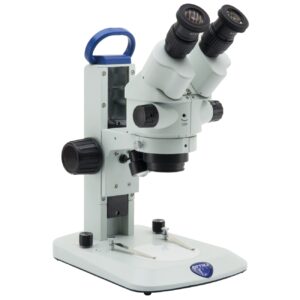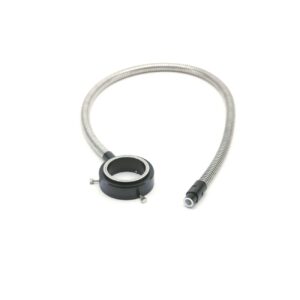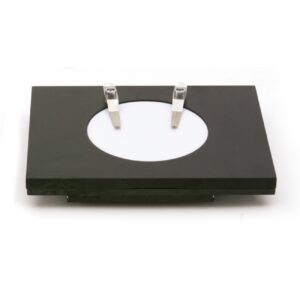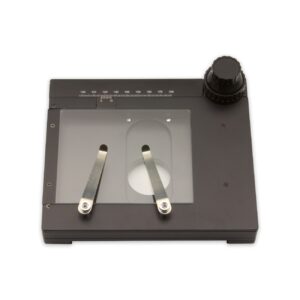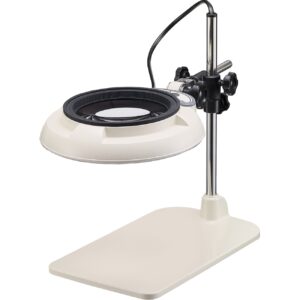In the world of machine shops, precision and accuracy are key elements in guaranteeing the quality of the work performed. Optical instruments such as microscopes, lenses and viewers play a crucial role in this context, allowing operators to examine minute details and perform quality checks with a level of precision that would otherwise be unattainable. In this in-depth look, we explore the features, applications and benefits of these instruments, providing a comprehensive overview for those working in industry.
Microscopes: a close-up look at precision
Microscopes are optical instruments that enable small objects to be enlarged, making visible details otherwise invisible to the naked eye. In machine shops, microscopes are used for inspecting mechanical components, checking surface quality and analysing materials. There are different types of microscopes, including optical, electronic and digital microscopes, each with specific applications and advantages.
Optical microscopes are the most common and use lenses to magnify the image of the object being observed. They are ideal for inspecting surfaces and for analysing transparent or semi-transparent samples. Electron microscopes, on the other hand, use a beam of electrons to obtain very high-resolution images, making it possible to observe details at the nanometric level. Finally, digital microscopes combine traditional optics with digital technology, allowing high-resolution images and videos to be captured for analysis and documentation.
Lenses: the key to detailed vision
Lenses are essential components of many optical instruments, including microscopes and viewers. In machine shops, lenses are used to improve visibility and precision during machining and quality control operations. Magnifying glasses, for example, are simple but effective tools for examining small details on mechanical components.
Lenses can be made of different materials, including glass and plastic, and can have different optical configurations to meet specific needs. Aspherical lenses, for example, are designed to reduce optical aberrations and improve image quality. In addition, lenses can be treated with anti-reflective coatings to improve light transmission and reduce unwanted reflections.
Visors: innovation at the service of industry
Visors are advanced optical instruments that combine magnification with digital technology to provide a clear and detailed view of observed objects. In machine shops, viewers are used for visual inspection of complex components, surface quality verification and defect analysis.
Visors can be equipped with advanced functionalities, such as the ability to capture images and videos, measure dimensions and document results. In addition, the viewers can be integrated with analysis software to automate quality control processes and improve operational efficiency.
Practical applications in machine shops
The use of microscopes, lenses and viewers in machine shops offers numerous benefits, including improved product quality, reduced inspection time and increased operational efficiency. These tools are essential for the visual inspection of mechanical components, the verification of surface quality and the analysis of defects.
For example, microscopes can be used to examine the surfaces of mechanical components for defects such as scratches, cracks or inclusions. Magnifying glasses can be used to inspect small details such as screw threads or contact surfaces. Visors, on the other hand, can be used for the visual inspection of complex components, such as gears or turbines, allowing defects and anomalies to be identified with precision.
Benefits of using advanced optical instruments
The adoption of advanced optical instruments in machine shops offers numerous benefits, including improved product quality, reduced inspection time and increased operational efficiency. These instruments allow quality checks to be carried out with a level of accuracy that would otherwise be unattainable, reducing the risk of defects and improving customer satisfaction.
In addition, the use of advanced optical instruments can help reduce operating costs, improving the efficiency of production processes and reducing the number of rejects and rework. Finally, the adoption of advanced technologies can improve a company's competitiveness, enabling it to offer high quality products at competitive prices.
Frequently asked questions on the use of microscopes, lenses and viewers
1. What are the main advantages of using microscopes in machine shops?
- Microscopes offer high magnification, allowing you to examine minute details and carry out quality checks with precision.
2. Which types of lenses are best suited for the inspection of mechanical components?
- Magnifiers and aspherical lenses are particularly suitable for the inspection of mechanical components due to their ability to improve visibility and reduce optical aberrations.
3. How can visors improve operational efficiency in machine shops?
- Visors offer advanced functionalities, such as image and video capture and dimensional measurement, which can automate quality control processes and improve operational efficiency.
4. What are the most common applications of electron microscopes in machine shops?
- Electron microscopes are used for material analysis and inspection of surfaces at the nanoscale level, allowing defects and anomalies to be precisely identified.
5. How can anti-reflective coatings improve lens performance?
- Anti-reflective coatings improve light transmission and reduce unwanted reflections, improving image quality and visibility during inspection.
In conclusion, the use of microscopes, lenses and viewers in machine shops is a strategic investment to improve product quality, reduce inspection time and increase operational efficiency. These advanced optical instruments offer a level of precision and accuracy that is indispensable for competitiveness and success in the industry.
Showing all 12 results
